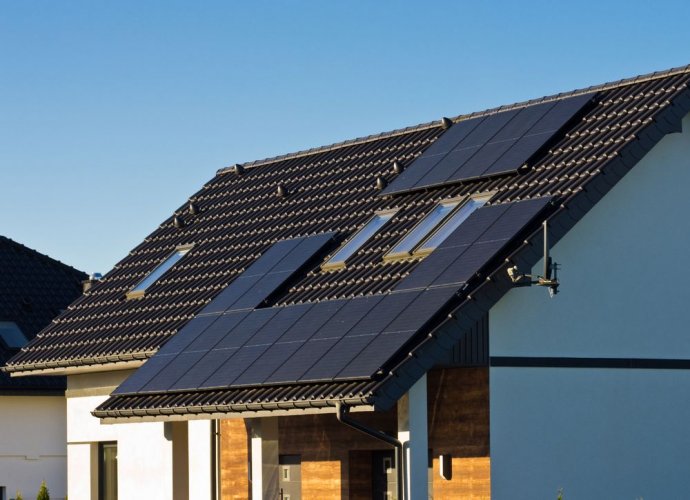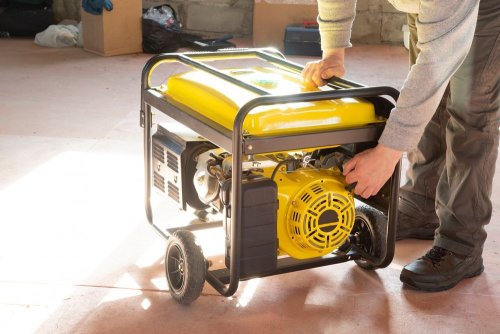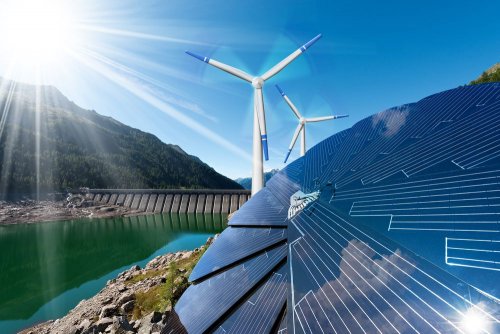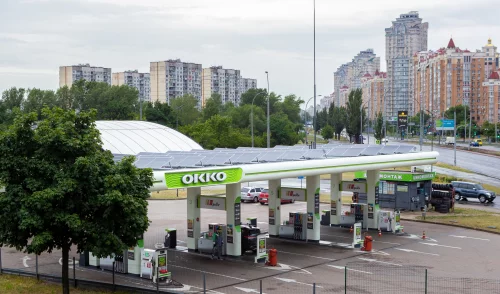The Ministry of Energy has initiated a draft law on supporting the production of green electricity by generating plants of consumers, which provides for the replacement of the green tariff with a new Net billing support model.
It is aimed at covering own consumption and will not require additional financial costs from the state or other consumers, it is said on Economic Truth blog of Yuriy Vlasenko, First Deputy Minister of Energy.
This will contribute to achieving a share of 25% of electricity generated from alternative energy sources in 2030 and allow Ukraine to create a sustainable energy system, with a predominantly clean energy mix, where pricing is fair and electricity is affordable.
The draft law envisages the development of green energy without cross-subsidization, with a much wider range of participants, and is aimed at strengthening individual energy independence.
Not only households will have the right to use the Net billing support model, but also non-household consumers – enterprises, institutions and organizations.
This mechanism will allow consumers to use the funds received from the sale of excess volumes of generated electricity in the next billing period. That is, the consumer receives a monetary deposit for excess energy released into the network at the price that was at that time on the market one day ahead or according to contractual conditions.
In the event that the demand for electricity exceeds its production, the electricity supplier will keep these funds in the consumer's personal account and use them to pay for the consumed electricity in subsequent periods during the calendar year.
Consumers who install SPP or WPP will be able to enter into an agreement for the purchase and sale of electric energy with a self-production mechanism, namely: between a private household (up to 30 kW), or a small non-domestic consumer (up to 50 kW) and a universal service provider, or another consumer ( up to 500 kW) and the electricity supplier.
Vlasenko noted that this approach is beneficial for those who want to produce energy not for the purpose of sale, but for their own energy autonomy, especially for final non-household consumers.
Currently, consumers are encouraged to install RES generation thanks to the green tariff model. It gave a significant impetus to the creation of a new industry and caused the rapid development of small generation.
From 2018 to 2022, the total capacity of SES installations in households increased more than fivefold and amounted to 1205 MW (about 45 thousand units).
"The current model has a number of limitations and shortcomings that lead to abuses and do not allow to ensure stability and sustainability of the development of the green generation," Vlasenko noted.
Disadvantages of the green tariff:
- The model of a fixed green tariff stimulates not so much the development of one's own energy independence as the targeted sale of electric energy from RES.
- Such a model leads to a number of technical challenges and distorts the ideology of supporting small generation from RES to bring clean green energy closer to consumers and increase their own energy independence. There are abuses associated with the construction of solar power plants by private households without their own consumption of electricity, or manipulations associated with increasing the capacity of such facilities.
- Currently, the mechanism for supporting RES generation is regulated only for households (up to 30 kW) and energy cooperatives (up to 150 kW).
Vlasenko noted that a large layer of non-domestic consumers, who could install generating plants to compensate primarily for their own consumption, is removed from the state support system and is not regulated by law.
"It is obvious that the competitive market cannot develop on such a basis. At the same time, the very idea of developing renewable energy for consumption is necessary and correct," he said.
However, a further increase in the number of such installations under the current green tariff model will lead to a significant increase in the costs included in the transmission system operator's tariff and the aggravation of the above technical problems.
The draft law proposes to provide an opportunity for the energy consumer to compensate the consumption of electric energy at his own facility from his own alternative sources, even if the generating plant is located in another place. It must be connected to the electrical networks of the same distribution system operator as the consumer and located in the territory of the relevant service provider.
This will allow, in particular, to get rid of the discrimination currently experienced by residents of multi-apartment buildings that do not have the space to install SPP. Thus, the condominium will be able to build a solar station on the available space outside the house or near the city and consume the energy produced by it.
The draft law also takes into account the current mechanism for imposing special obligations to ensure the availability of electric energy (PSO) for household consumers. They will also be able to install generating capacity from renewable energy sources and sell excess electricity produced at a price determined within the framework of the PSO. And go to zero when providing yourself with electricity.
"The benefits included in this draft law are not hypothetical. In particular, a similar model of prosumerism has been successfully implemented in Lithuania – the first country in the European Union that was able to completely abandon the import of russian energy carriers thanks to the diversification of approaches in energy production and consumption," Vlasenko emphasized.
The approaches proposed by the draft law will apply only to new consumers who will install generating capacity from RES.
The Ministry of Energy is starting a public discussion of this draft law.
The implementation of the law will allow for the further development of small distributed generation of electricity from renewable energy sources by consumers without state support.
Earlier, EcoPolitic wrote, that on June 8, the share of clean energy (nuclear, hydro, wind, solar, biogeneration) in the energy balance of Ukraine reached 87.4%.
As EcoPolitic previously reported, Guaranteed Buyer has developed a draft law for obtaining the right to export green electricity and develops by-laws for export operations.





